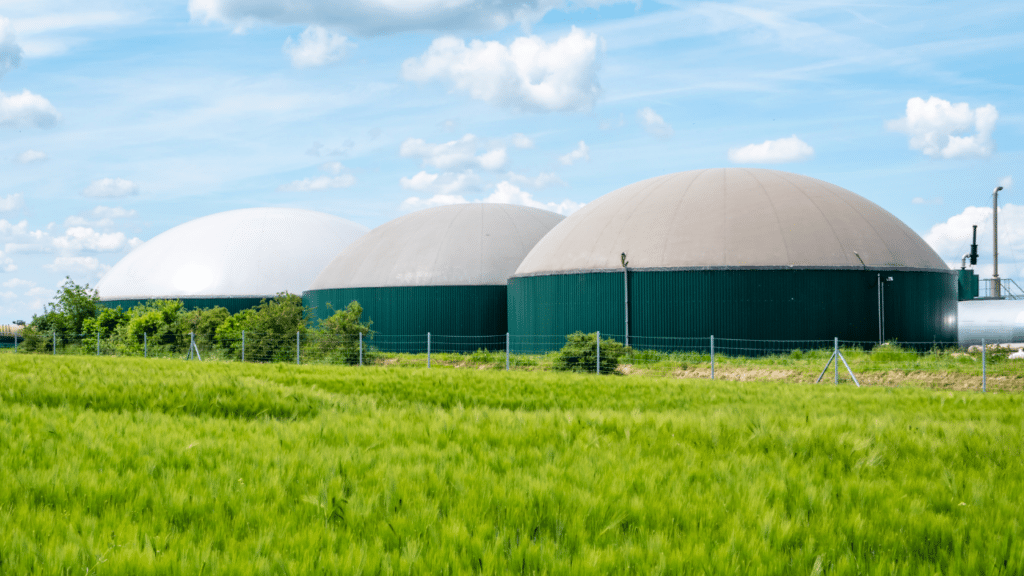Global Biogas Plants Size Forecast to Reach $7.7 Billion by 2031. Here’s why it’s booming…


The market size of global biogas plants is estimated to reach US$7.72 billion by 2031, growing at a compound annual growth rate of 9.15%, according to a study by Straits Research released on March 12, 2024.
Why is the biogas sector booming and how can it help fix our climate? Here’s what we know.
The production of Biogas began to grow in the 1990s, but it was only in recent years that it started to become popular. One of the reasons is the energy security concerns caused by Russia’s invasion of Ukraine. That and the pressing necessity to address climate change has increased the focus on biogas as a sustainable and readily deployable alternative to natural gas that can reduce dependency on natural gas imports and support energy security in many countries.
According to the International Energy Agency (IEA), along with targeted policies, market conditions are stimulating biogas use.
What is biogas?
A renewable energy source, biogas is produced by the breakdown of organic matter like food scraps and animal waste, a process that is called anaerobic digestion. The breakdown process takes place when waste materials are enclosed in an environment where there is no oxygen. This can occur naturally or as part of an industrial process to intentionally create biogas as a fuel.
Biogas can power heat and power units, but other gas demand markets, like gas utilities and the industry and transport sectors, will require the use of another type of biogas – biomethane. The Environmental Energy Study Institute describes biomethane as a biogas that has been refined to remove carbon dioxide, water vapor, and other trace gases so that it meets natural gas industry standards.
In 2022, data from IEA showed that combined global biogas and biomethane production reached over 1.6 exajoule (EJ), a 17% increase from 2017. Europe was where almost half of the production was based, with Germany alone meeting almost 20% of global consumption. Meanwhile, about 21% is produced in China, followed by the US with 12%, and India, 9%.
How is biogas used?
Biogas is beneficial as an energy source, especially since biological matter, which is used to produce biogas, will naturally decay anyway, so capturing the gases produced by this decay, and using them as an energy source, will cause less harm to the environment than if they’re allowed to escape into the atmosphere. Biogas production is also largely cyclical. An example of which is using animal waste produced on a farm to produce biogas, which can then be used to fuel machinery there. According to the NationalGrid, there is a wide variety of waste material that can be broken down into biogas, and this includes animal manure, municipal rubbish or waste, plant material, food waste or sewage.
If biogas is compressed, it can be used as a fuel for vehicles, and if it is cleaned up and upgraded to natural gas standards, which is biomethane, then it can be used in a similar way to methane, for cooking and heating.

Top users of biogas
The NationalGrid said in a report that China has the largest number of biogas plants and estimated that about 50 million households in the country are using biogas, mostly in rural areas and small-scale home and village plants.
Household digesters in the country were developed some decades ago to provide clean energy for cooking and residential use in rural areas, which accounts for around 300,000 TJ/year of biogas production. The support from the Chinese Rural Household Biogas State Debt Project beginning in 2003 installed almost 42 million household digesters by 2015, the IEA said. In the same year, government policy shifted towards engineered plants for combined heat and power generation, with capital aid and feed-in tariffs being offered. India is another country that has considerable small-scale household biogas production in rural areas that lack grid access, making biogas an important energy source for clean cooking and lighting.
Meanwhile, the biogas and biomethane industry in Europe is already quite advanced with growing markets. Countries in the region with a developed industry have their governments seeking to encourage cost reductions and more competitive business models that rely less on public support and more on market revenues, like clean energy certificate trading or Guarantee of Origin schemes. Biomethane development in the US has historically been driven by the transport sector and support schemes such as the Renewable Fuel Standard and California’s Low Carbon Fuels Standard applicable to fuels sold in the state.

Industry growth
The IEA forecasts global biogas production growth to accelerate from 2023 to 2028, helped by the introduction of impactful new policies in more than 13 countries in 2022 to 2023. Europe and North America will record the most growth, owing partially to established infrastructure and experience, and driven by previous policies that make rapid deployment in a five-year term possible. China and India also have ambitious expansion plans in the next five years, but their lack of infrastructure limits growth. However, both countries will be ready for accelerated growth beyond 2028 since they already have considerable production potential.
Electricity generation has been the main motivation for biogas expansion in Europe for the last two decades, but recent policies promote diversification of biogas uses, utilizing biomethane. Thus, biomethane is expected to see much growth, from both new plants and upgraded existing biogas plants.
In Germany and some other major markets, the end use that provides the most revenue for biomethane producers is transport. For countries that already have gas vehicle fleets and filling stations, this is a strong growth driver.
Meanwhile, new federal and state-level policy support has allowed the US to further accelerate its production growth for biomethane in recent years.
Market players
French utilities company Engie SA is one of the competitive players in the market. Others include Air Liquide SA, Scandinavian Biogas, Gasum Oy, Ameresco, A2A SpA, AB Holding SpA, EnviTec Biogas AG, and BTS Biogas SRL/GmbH.
If you would like to take a look at our other renewables blogs, follow this link.
Take a look at our live renewables jobs here!










